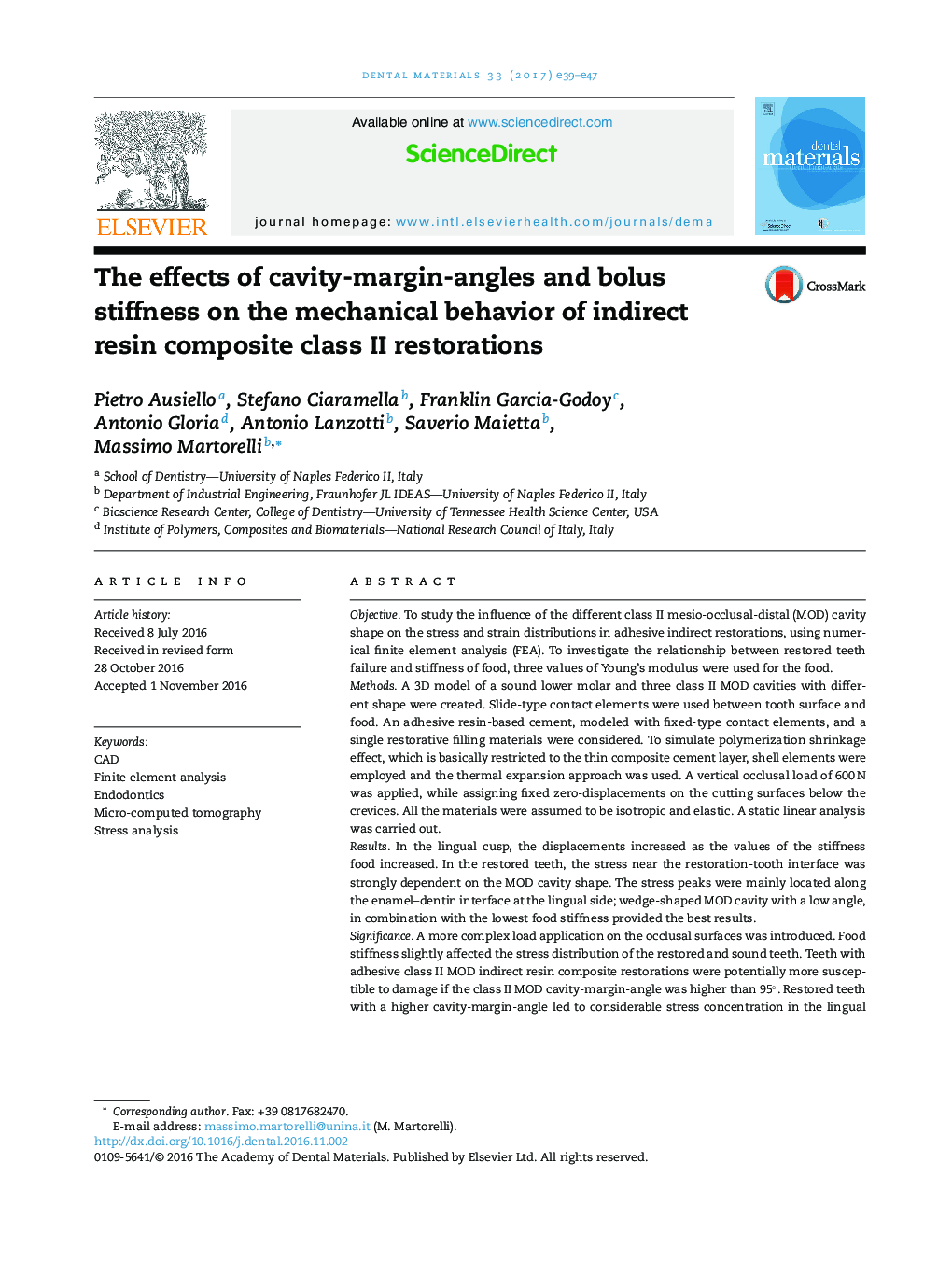| کد مقاله | کد نشریه | سال انتشار | مقاله انگلیسی | نسخه تمام متن |
|---|---|---|---|---|
| 5433169 | 1398055 | 2017 | 9 صفحه PDF | دانلود رایگان |

ObjectiveTo study the influence of the different class II mesio-occlusal-distal (MOD) cavity shape on the stress and strain distributions in adhesive indirect restorations, using numerical finite element analysis (FEA). To investigate the relationship between restored teeth failure and stiffness of food, three values of Young's modulus were used for the food.MethodsA 3D model of a sound lower molar and three class II MOD cavities with different shape were created. Slide-type contact elements were used between tooth surface and food. An adhesive resin-based cement, modeled with fixed-type contact elements, and a single restorative filling materials were considered. To simulate polymerization shrinkage effect, which is basically restricted to the thin composite cement layer, shell elements were employed and the thermal expansion approach was used. A vertical occlusal load of 600 N was applied, while assigning fixed zero-displacements on the cutting surfaces below the crevices. All the materials were assumed to be isotropic and elastic. A static linear analysis was carried out.ResultsIn the lingual cusp, the displacements increased as the values of the stiffness food increased. In the restored teeth, the stress near the restoration-tooth interface was strongly dependent on the MOD cavity shape. The stress peaks were mainly located along the enamel-dentin interface at the lingual side; wedge-shaped MOD cavity with a low angle, in combination with the lowest food stiffness provided the best results.SignificanceA more complex load application on the occlusal surfaces was introduced. Food stiffness slightly affected the stress distribution of the restored and sound teeth. Teeth with adhesive class II MOD indirect resin composite restorations were potentially more susceptible to damage if the class II MOD cavity-margin-angle was higher than 95°. Restored teeth with a higher cavity-margin-angle led to considerable stress concentration in the lingual cusp along the enamel-dentin interface. These models were more susceptible to fracture in the lingual cusps when compared to the buccal ones.
Journal: Dental Materials - Volume 33, Issue 1, January 2017, Pages e39-e47